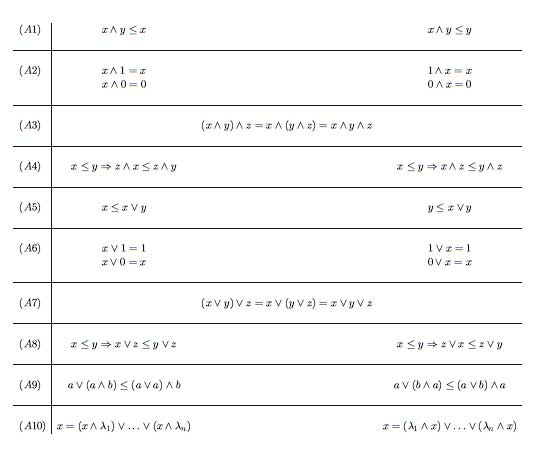For
finite dimensional hereditary algebras, one can describe its
noncommutative topology (as developed in part 2)
explicitly, using results of Markus
Reineke in The monoid
of families of quiver representations. Consider a concrete example,
say
$A = \begin{bmatrix} \mathbb{C} & V \\ 0 & \mathbb{C}
\end{bmatrix}$ where $V$ is an n-dimensional complex vectorspace, or
equivalently, A is the path algebra of the two point, n arrow quiver
$\xymatrix{\vtx{} \ar@/^/[r] \ar[r] \ar@/_/[r] & \vtx{}} $
Then, A has just 2 simple representations S and T (the vertex reps) of
dimension vectors s=(1,0) and t=(0,1). If w is a word in S and T we can
consider the set $\mathbf{r}_w$ of all A-representations having a
Jordan-Holder series with factors the terms in w (read from left to
right) so $\mathbf{r}_w \subset \mathbf{rep}_{(a,b)}~A$ when there are a
S-terms and b T-terms in w. Clearly all these subsets can be given the
structure of a monoid induced by concatenation of words, that is
$\mathbf{r}_w \star \mathbf{r}_{w’} = \mathbf{r}_{ww’}$ which is
Reineke’s *composition monoid*. In this case it is generated by
$\mathbf{r}_s$ and $\mathbf{r}_t$ and in the composition monoid the
following relations hold among these two generators
$\mathbf{r}_t^{\star n+1} \star \mathbf{r}_s = \mathbf{r}_t^{\star n}
\star \mathbf{r}_s \star \mathbf{r}_t \quad \text{and} \quad
\mathbf{r}_t \star \mathbf{r}_s^{\star n+1} = \mathbf{r}_s \star
\mathbf{r}_t \star \mathbf{r}_s^{\star n}$ With these notations we can
now see that the left basic open set in the noncommutative topology
(associated to a noncommutative word w in S and T) is of the form
$\mathcal{O}^l_w = \bigcup_{w’} \mathbf{r}_{w’}$ where the union is
taken over all words w’ in S and T such that in the composition monoid
the relation holds $\mathbf{r}_{w’} = \mathbf{r}_w \star \mathbf{r}_{u}$
for another word u. Hence, each op these basic opens hits a large number
of $~\mathbf{rep}_{\alpha}$, in fact far too many for our purposes….
So, what do we want? We want to define a noncommutative notion of
birationality and clearly we want that if two algebras A and B are
birational that this is the same as saying that some open subsets of
their resp. $\mathbf{rep}$’s are homeomorphic. But, what do we
understand by *noncommutative birationality*? Clearly, if A and B are
prime Noethrian, this is clear. Both have a ring of fractions and we
demand them to be isomorphic (as in the commutative case). For this
special subclass the above noncommutative topology based on the Zariski
topology on the simples may be fine.
However, most qurves don’t have
a canonical ‘ring of fractions’. Usually they will have infinitely
many simple Artinian algebras which should be thought of as being
_a_ ring of fractions. For example, in the finite dimensional
example A above, if follows from Aidan Schofield‘s work Representations of rings over skew fields that
there is one such for every (a,b) with gcd(a,b)=1 and (a,b) satisfying
$a^2+b^2-n a b < 1$ (an indivisible Shur root for A).
And
what is the _noncommutative birationality result_ we are aiming
for in each of these cases? Well, the inspiration for this comes from
another result by Aidan (although it is not stated as such in the
paper…) Birational
classification of moduli spaces of representations of quivers. In
this paper Aidan proves that if you take one of these indivisible Schur
roots (a,b) above, and if you look at $\alpha_n = n(a,b)$ that then the
moduli space of semi-stable quiver representations for this multiplied
dimension vector is birational to the quotient variety of
$1-(a^2+b^2-nab)$-tuples of $ n \times n $-matrices under simultaneous
conjugation.
So, *morally speaking* this should be stated as the
fact that A is (along the ray determined by (a,b)) noncommutative
birational to the free algebra in $1-(a^2+b^2-nab)$ variables. And we
want a noncommutative topology on $\mathbf{rep}~A$ to encode all these
facts… As mentioned before, this can be done by replacing simples with
bricks (or if you want Schur representations) but that will have to wait
until next week.
 and
and